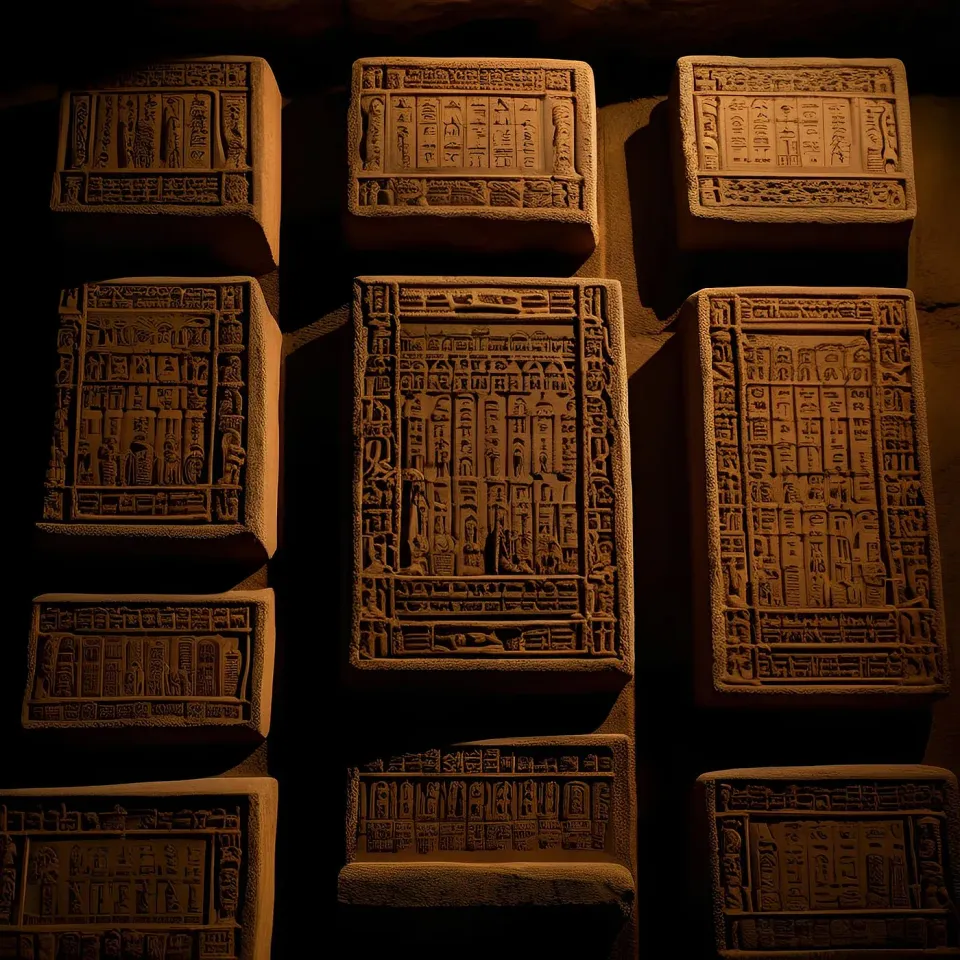The Passion of Christ as a Developing Tradition
No, not Mel Gibson's Passion, the Bible's

In this final installment of the Gospels as a Developing Tradition series, we will examine the gospels' account of the second most significant event in Jesus’ life, his crucifixion. Now, if you’re an Evangelical, you likely think of the death, burial, and resurrection of Jesus as the pinnacle or most important aspect of Jesus’ life.
A Quick Explanation of Why Evangelicals Focus on Jesus’ Death
The reason for this is because of the way you’ve been taught the gospel. In the earlier paradigm of the gospel understanding of Jesus, we are all sinners; because of our sins, we are separated from God, and the only way we can be saved is if there’s an adequate sacrifice that can pay for our sins. This is where Jesus comes in.
We focus less on the life of Christ and more on his death because it is through Christ’s death that payment for our sins is made. You may have even heard a preacher say something like, “Jesus died in our place and for our sin.” In this view, Christ’s life is all well and good, but the real stuff of Jesus is in his dying for our sins so we can accept him as our Lord and Savior and not go to hell like everyone who does not confess their belief in him.
I used to hold to this gospel view but no longer do. Because of the gospels, I’ve come to see the early Christian community cared far more about the life Jesus lived than they did about his death or their spiritual implications. If you’d like to read more about my contrasting what I refer to as the Earlier paradigm (what I used to believe) to the Emerging paradigm (what I currently believe), check out this article:
The Earlier vs. Emerging Paradigm of Christianity
Jesus’ passion stories (a fancy way of saying the accounts of his death) are found in all four gospels. What’s important to remember is that the manner of Jesus’ death is that it was an execution by crucifixion. This is significant because, in first-century Rome, crucifixion was reserved for two types of criminals.
- Habitually defiant slaves (Jesus wasn’t a slave)
- Political rebels (Jesus was a political threat in the eyes of Rome)
As I’ve mentioned in a previous article, Rome didn’t crucify Jesus because of any religious or “predestined” reasoning. In Rome’s mind, Jesus was a political threat because he claimed to bring a kingdom other than Rome, and Jesus taught this kingdom was greater than Rome.
Examining the Passion Stories within the Synoptic Gospels
As I’ve done throughout this series, I’ll start with Mark’s account and contrast Matthew's and Luke’s accounts against Mark since they used Mark as their guide in writing their gospels. You can read all of Mark 14:43-15:47 here, but for the sake of space, I’m going to bullet out the major points below:
Jesus is betrayed by Judas.
Jesus is arrested in the Garden of Gethsemane by an armed crowd sent by the Jewish authorities.
There are two trials, the first Jewish and the second Roman.
The Jewish trial is religious, as Jesus is convicted of blasphemy.
The Roman trial was political as the charges revolved around whether Jesus was “king of the Jews,” which would be treason and thus guilty of insurrection.
Jesus is crucified, and his last words are, “My God, my God, why have you forsaken me?”
Jesus died and is buried in the tomb of Joseph of Arimathea, who is on the Jewish Council.
Matthew and Luke’s Additions
Luke’s Additions
In Luke’s account, we see the following additions being made to Mark:
Luke adds an account of the charges brought by the Jewish authorities to Pilate (Luke 23:2).
Jesus appears before Herod Antipas (Luke 23:6-16)
We encounter the weeping women of Jerusalem (Luke 23:27-31)
We also see Jesus’ encounter with the two criminals being crucified alongside him (Luke 23:39-43)
Interestingly Luke removes Jesus’ last words in Mark and replaces them with what are known as the three “last words:”
Last word 1: “Father forgive them, for they know not what they do.” (Luke 23:34)
Last word 2: “Today you will be with me in paradise.” (Luke 23:43)
Last word 3: “Father, into your hands I commit my spirit.” (Luke 23:46)
Matthew’s Additions
In Matthew’s account, we see a handful of additions to Mark:
- Matthew shares a story of Judas committing suicide. (Matthew 27:3-10)
- There are two scenes in the encounter between Jesus and Pilate.
- There is an interesting story about the moment of Jesus’ death, which is about the resurrection of many saints who came out of their tombs, entered Jerusalem, and appeared to many witnesses. (Matthew 27:52-53
- Matthew adds guards to being placed at Jesus’ tomb. (Matthew 27:62-66)
2 Ways Matthew and Luke’s Additions Confirm the Gospels as a Developing Tradition
1. Each gospel writer is influenced by factors that affect the development of their gospel story.
Let’s take Matthew’s account of adding two scenes with Pilate. In the first scene, Pilate’s wife tells him about a dream she had attesting to Jesus’ innocence. In the second scene, we see Pilate wash his hands of Jesus’ blood, making it clear that Jesus’ death is on the Jewish crowd, not him.
Why does Matthew add these two additional scenes to his gospel? Most scholars agree with the hypothesis that Matthew makes these additions because Matthew is shifting responsibility for the execution of Jesus from Roman authority to the Jewish people as a whole. He likely makes these changes for two reasons.
- By the time Matthew was writing his gospel (80-90 CE), there was already increased conflict between the Christian Jews and the traditional Jews. As a result of the present conflict, Matthew projects these tensions back into his gospel.
- The second reason is that the early Christian movement grew within the Roman Empire. Inherent to being a Christian is the reality of following a person who was crucified by Rome as a political rebel, an insurrectionist of the state. Matthew may have made this change to help curtail further claims by Roman authorities that Jesus’ followers were also politically dangerous. Instead of feeding that narrative, Matthew changed the story so Roman authorities thought Jesus was innocent and willing to let him go.
Sadly, Matthew’s changes to the gospel story did not age well. Throughout church history, Christians have routinely leaned on Matthew’s gospel to justify anti-semitism and persecution of Jews. I by no means condone or support the current state of Israel committing genocide against Palestinians; at the same time, I do recognize and own that the church has played a role in the generational trauma that is presently experienced by the Jewish people.
In Matthew’s day, if the Christian Jews and traditional Jews weren’t experiencing conflict that ultimately led to a split between the two groups, Matthew likely wouldn’t have been so aggressive in shifting the blame for Jesus’ death exclusively onto the Jews. Despite this example proving how the gospels are a developing tradition, tragically, this addition has been weaponized to justify centuries of anti-semitism.
2. The Influence of Symbolism Based on the Jewish Bible
Finally, each synoptic author's use of the Hebrew Bible definitively shows how each author shaped and changed the gospels. There is ample use of symbolism based on Jewish tradition found in the passion stories. For example, wine mixed with myrrh in Mark 15:23 points back to Psalm 69:21, and the sponge filled with vinegar in Mark 15:36.
As mentioned in my last article, Jesus’ Entry in Jerusalem as a Developing Tradition, Matthew adding a second animal to Jesus entering Jerusalem on Palm Sunday was likely done to echo Zechariah 9:9. Jesus likely didn’t ride into Jerusalem with one foot on a colt and another on a donkey.
This leads us to ask ourselves, “Are the details in the passion story history remembered or prophecy historicized?” For example, does Luke tell us lots were cast for Jesus’ clothes because it was historical? Or is gambling for Jesus’ clothes another example of the Hebrew Bible being used to historicize prophecy Psalm 22:18, “They divide my clothes among themselves, and for my clothing they cast lots?” Is Luke 23:34 telling us about an actual event that happened at a specific time, or is Luke being shaped by Jewish tradition in the Hebrew Bible?
The truth is, and this will scare some of you, we don’t know. After the initial “oh shit” moment passes, I hope those three little words bring you immense comfort, “we don’t know.” The gospels only have to be rigid “thus sayeth the Lord” books we received from the direct mouth of God within a fundamentalist (looking at you Evangelicals) framework. Only in this framework must the Bible be defended as God’s authoritative, inerrant, and infallible word, as if the Bible were the fourth member of the Trinity.
Throughout this series, I hope I have helped you see the Bible is more like a fine wine that is better when you give it space and let it breathe rather than giving it god-like authority that must be seen literally, historically, and given your unquestioning loyalty. Yes, the Bible is the sacred Scripture for Christians, and yes, it is the best resource we can access to learn about the life and teachings of Jesus, but it can be both of these things without all the extra fundamental baggage.
The Buddha once taught that wisdom is “like a finger pointing to the moon.” For the Christian, Jesus is the moon, the embodiment of wisdom, and the Bible is just a finger pointing to Jesus. Don’t get so caught up in the Bible that you start functioning like the finger is the moon. The longer you focus on the finger, the more you’ll lose sight of the moon.
For your convenience, here are the other 4 articles that make up the Gospels as a Developing Tradition series:




